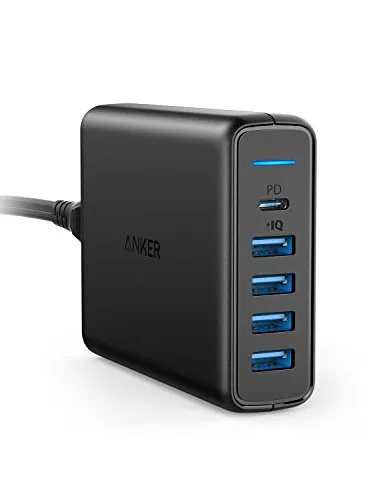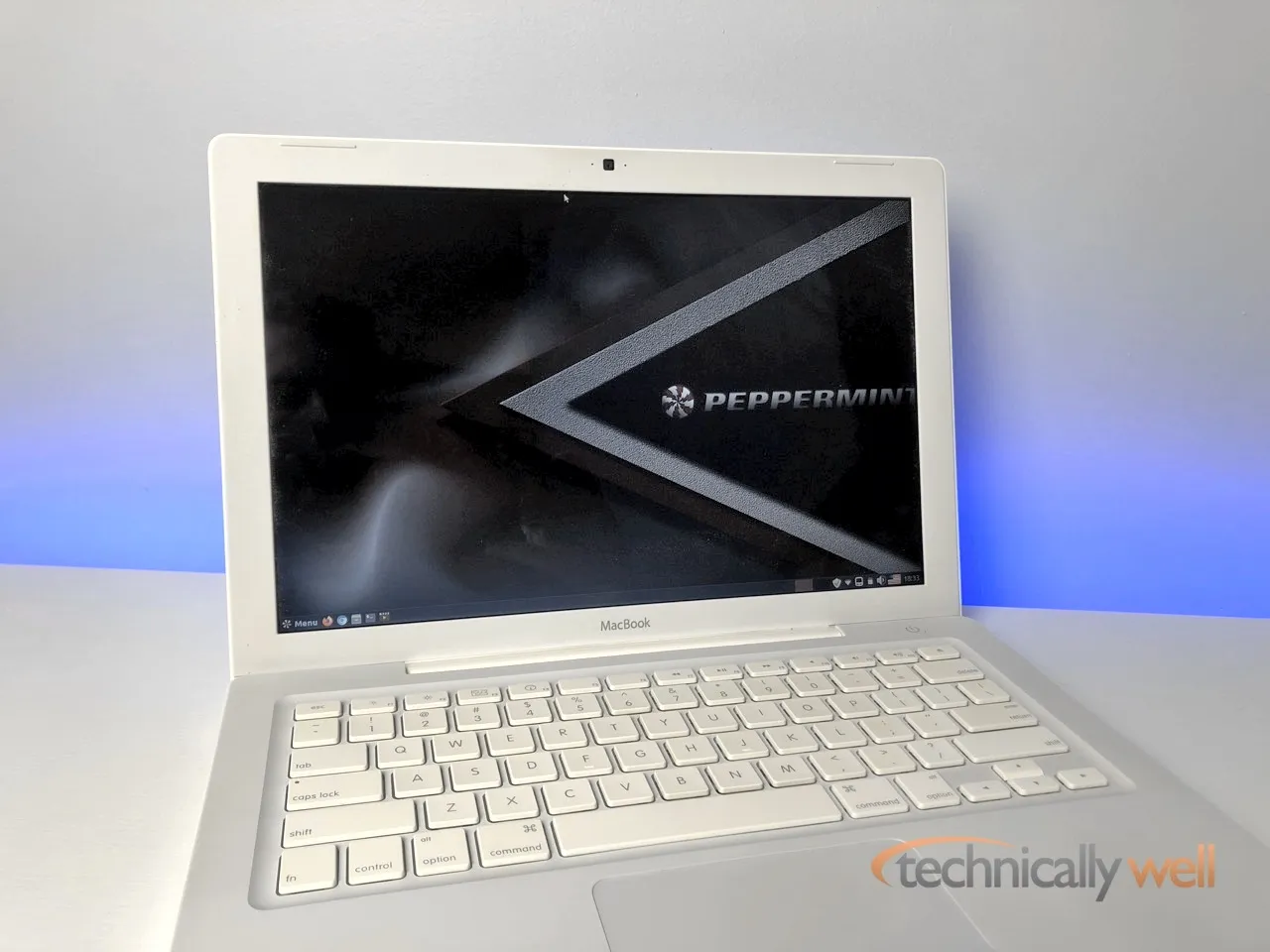Anker PowerPort 5 with USB-C Power Delivery 2017 Review
As an Amazon Associate, we earn from qualifying purchases at no cost to you.
Anker has updated their 5-port USB-C charger with a new design for 2017. With more devices accepting their charge via USB-C, Anker’s new PowerCore is definitely worth checking out.
Design
Anker’s newest USB Type C charger features a dedicated USB-C output and 4 regular-size USB ports. It’s an update to last year’s 5 port USB-C charger. Despite the somewhat confusing blue color, the regular USB ports do not support Qualcomm QuickCharge technology. However, the 4 ports do feature Anker’s PowerIQ technology, so they output up to 2.4amp at 5V each, meaning that iPads and other tablets can be automatically detected and charged at full speed.
The entire unit is in a small form-factor, black matte casing common with Anker’s other multi-port chargers. It is slightly larger than Anker’s regular PowerPort 5 charger. The dimensions for this USB-C 5 port charger are 2.64 x 3.27 x 1.1 in, making it slightly more compact than Anker’s first 5 port USB-C charger (which was at 3.07 x 4.06 x 1.1 in).
Features
This charger is similar to Anker’s original PowerPort 5, swapping one of the USB ports for the newer USB Type-C port. This helps “future-proof” the charger as we should see more and more device adapting the USB-C standard. The USB Type-C port can output up to 30W, making it capable of charging the latest MacBooks. I found that it can also fast charge my Nintendo Switch.
The charger also comes with an adhesive strip to help you secure the charger in a permanent location. This makes it convenient for mounting under a desk or for placing it at your home’s “charging spot” so the whole family can charge their gadgets (without walking off with the charger).
The power cable can be detached from the charger, making it convenient to pack up for travel.
Performance
In my testing, the Nintendo Switch charged at 15V 1-1.5A and the Samsung Galaxy Book 12 at 20V 1-1.5A. The only item that gave me trouble was my Acer Chromebook R13, which can accept a 15V 3A charge that exceeds the Anker charger’s 15V 2A maximum. Power Delivery via USB-C is still fairly new so there are bound to be some compatibility issues.
The unit can output 60W split with a maximum of 30W available to the USB-C port. If you’re charging a MacBook at 30W, that would leave 30W — or 6 amps — left for the remaining 4 USB ports. If you were to max this unit out with all 4 ports charging a tablet each while you were charging a MacBook (probably not a likely scenario for most people), that would mean the tablets would charge slightly slower at 1.5 amp each.
Safety
The new PowerPort 5 Speed with USB-C features Anker’s standard “MultiProtect” safety features. This includes surge protection, heat control, overcharge protection and more. There is no UL-certification label on the unit, which is normal for Anker products and I’ve never encountered a safety issue with the other Anker units I own.
Specifications
USB PD Output
- 5V 3A
- 9V 3A
- 15V 2A
- 20V 1.5A
Our Verdict
The PowerPort 5 Speed USB-C PD charger features an updated design with a blue LED power light. The USB-C port can output up to 30W and the 4 regular USB ports can output up to 2.4 amps each with Anker's PowerIQ technology, making it ideal for MacBooks, the Nintendo Switch, and of course iPhones, iPads and Android phones.
PROs
- USB Type-C port with 30W output
- 4 regular USB ports with PowerIQ (2.4amp) charging
- Safety protections against surges and overheating
CONs
- No Qualcomm QuickCharge technology
- Some devices have unique PD implementations and may not fast charge with this charger





 Hi, I'm Ryan! I've worked in the IT industry for over two decades and I love checking
out new gadgets, apps, and services that make our lives easier.
Hi, I'm Ryan! I've worked in the IT industry for over two decades and I love checking
out new gadgets, apps, and services that make our lives easier.